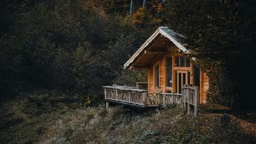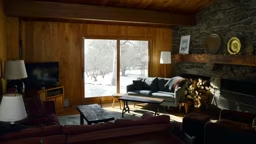The best time to plant a new tree is during the dormant season – early spring before bud break or in the fall after leaf drop. But trees can be planted any time during the growing season. Just be aware that your tree is going to be more stressed if you plant it in the heat of summer and you’ll probably have to do some additional watering.
First, look over the area where you’d like to plant. Choose a tree that, when mature, will be a suitable size for your site. Also, assess things like available sunlight, wind, drainage and soil pH. (You did do a soil test, right?)
Then ask these questions: Do you want an evergreen or a deciduous tree? Do you want spring or summer flowers? Ornamental bark? Berries? Good fall color? Dense shade or filtered shade? A column shape, weeping or rounded form? Small (10-25 feet tall), medium (25-40 feet) or large (more than 40 feet)?
And by all means, do your new tree a huge favor by planting it correctly. Many people believe that you need to dig a deep hole when planting a tree. The exact opposite is true. Your hole needs to be much wider than deep – at least three to five times the diameter of the root ball. It needs to be only as deep as the root ball or just 1-2 inches less.
It is essential that the root flare (area where the trunk ends and the roots begin) be at or slightly above the existing soil line, so make sure the root flare is visible after planting. The bottom of the hole should be firm so that the tree doesn’t sink after planting.
Remove or cut away any twine, burlap (especially the plastic type) and wire baskets. Loosen the roots
to enhance their growth and prevent girdling. Finer root systems can be loosened with your hands. Heavier roots may need to be cut apart with pruning shears.
Next, position the tree in the hole, making sure that it is straight, and spread out the roots. Backfill the hole with the soil you took out. You don’t need to put in any additives or amendments. Firm the soil gently, then water deeply.
Your final step is to mulch. Add two to four inches around the base of the tree, but not against the trunk. Make a doughnut, not a mound. Mounding mulch around the trunk and covering the root flare inhibits gas exchange and can cause disease and decay of the living bark at the base of the tree.
Water the tree once a week if it hasn’t rained and more if it’s hot. A good way to judge: When the soil below the mulch is dry, then it’s time to water.
Mounded mulch is one of the biggest mistakes I see in newly planted trees. And I see it everywhere, especially in parking lots around stores and malls. Because of the way these public trees are mulched, many people think that is how it should be done. But pay no attention to them. You want your tree to be healthy, don’t you?
Master Gardener Audrey Hillman is a landscape and garden designer in Emmitsburg, Md. This story originally appeared at www.emmitsburg.net.
to enhance their growth and prevent girdling. Finer root systems can be loosened with your hands. Heavier roots may need to be cut apart with pruning shears.
Next, position the tree in the hole, making sure that it is straight, and spread out the roots. Backfill the hole with the soil you took out. You don’t need to put in any additives or amendments. Firm the soil gently, then water deeply.
Your final step is to mulch. Add two to four inches around the base of the tree, but not against the trunk. Make a doughnut, not a mound. Mounding mulch around the trunk and covering the root flare inhibits gas exchange and can cause disease and decay of the living bark at the base of the tree.
Water the tree once a week if it hasn’t rained and more if it’s hot. A good way to judge: When the soil below the mulch is dry, then it’s time to water.
Mounded mulch is one of the biggest mistakes I see in newly planted trees. And I see it everywhere, especially in parking lots around stores and malls. Because of the way these public trees are mulched, many people think that is how it should be done. But pay no attention to them. You want your tree to be healthy, don’t you?
Master Gardener Audrey Hillman is a landscape and garden designer in Emmitsburg, Md. This story originally appeared at www.emmitsburg.net.
 dreamstime.com
dreamstime.com 










